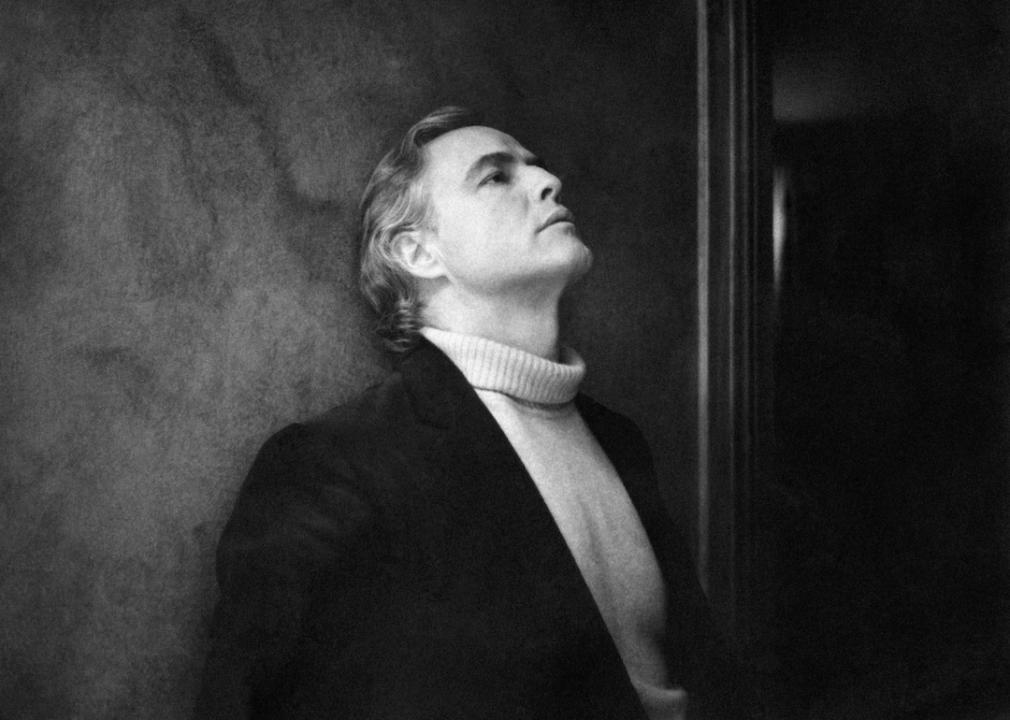Marlon Brando: The life story you may not know
Published 10:45 pm Friday, March 25, 2022
Mondadori Portfolio by Getty Images
Marlon Brando: The life story you may not know
Film and theater aficionados have long been enthralled by Marlon Brando, the brooding genius many argue was the greatest actor of our times, and that appreciation shows little signs of fading.
In real life, Brando was the underdog: the product of an unhappy family life with a bad boy image. He challenged authority, declined to play by the rules, and defied expectations. He could be difficult, to say the least.
He had his demons, his professional failures, and his personal tragedies. He was reclusive and mysterious, although he did let the public have a glimpse of his private life when he penned his autobiography “Songs My Mother Taught Me” in 1994.
Through it all was his incomparable acting talent, playing damaged, tortured souls like the raging Stanley Kowalski in “A Streetcar Named Desire” and brawler Terry Malloy in “On the Waterfront.” Who hasn’t found themselves repeating Kowalski’s calls for “Stella!” and Molloy’s claim that “I coulda been a contender?”
Brando was firmly in the public eye for decades, his every move devoured by fans and recorded by the media. But there’s always more to learn about the star, so Stacker compiled a list of 25 facts from Brando’s life story that you may not know. To put together the list, Stacker consulted newspaper articles, magazine accounts, biographies, film archives, film recordings, reviews, and fan websites.
You may also like: 100 celebrities who grew up in small towns
![]()
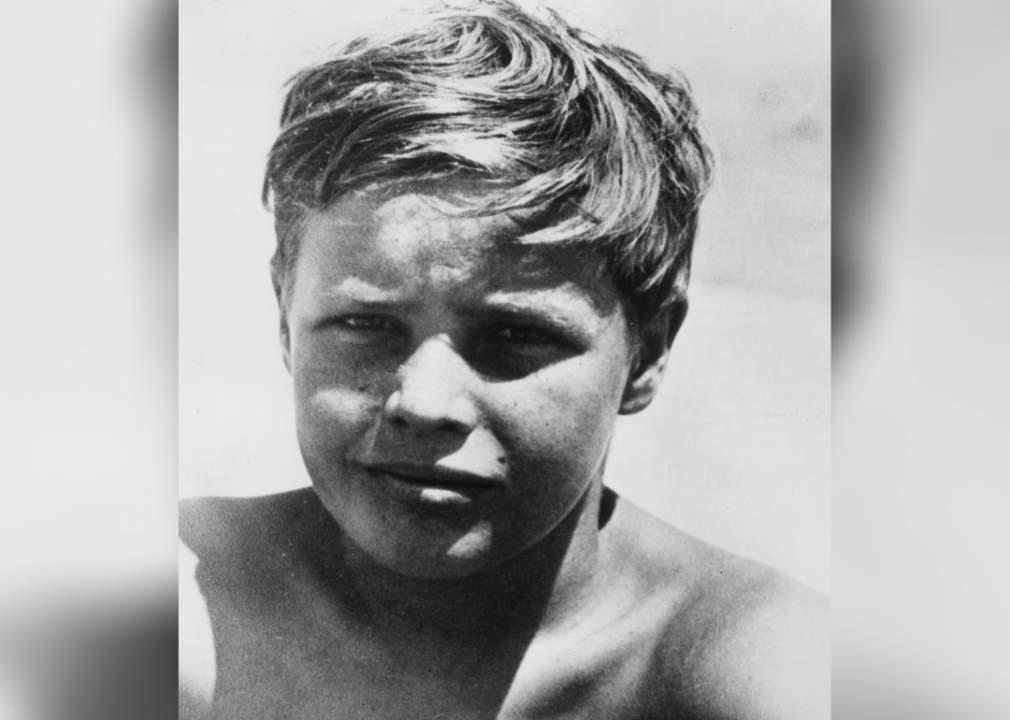
Archive Photos // Getty Images
1920s: Brando’s childhood and family life
Marlon Brando was born on April 3, 1924, in Omaha, Nebraska, where his family lived until moving to Illinois when he was 6 years old. Both his father and mother were alcoholics, and his father was hypercritical and abusive. His father was a chemical salesman who traveled, and as children, Brando and his siblings would have to retrieve their inebriated mother from local bars. Brando’s rage toward his father lasted his lifetime.
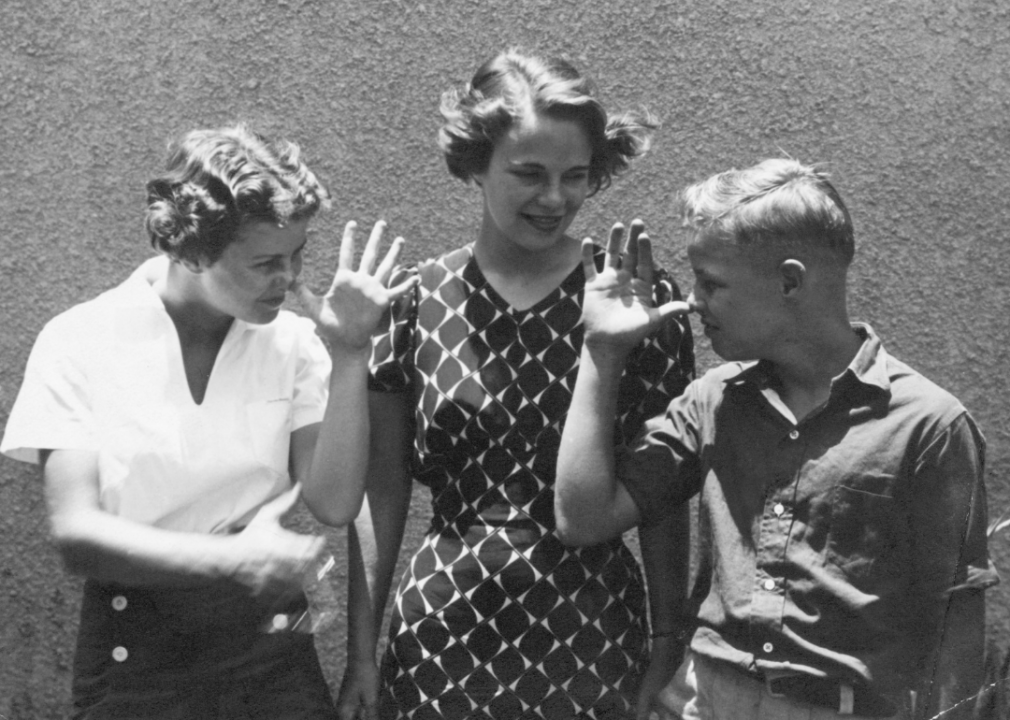
Bettman // Getty Images
1920s: Brando’s elder sisters Jocelyn and Frances
The actor had two older sisters, Jocelyn and Frances. Frances Brando became an artist, and Jocelyn Brando became an actress, performing on Broadway in Eugene O’Neill’s “Desire Under the Elms” and “Mourning Becomes Electra.” She appeared in the movies “The Big Heat” and “Mommie Dearest,” had roles on television’s “Alfred Hitchcock Presents” and “Little House on the Prairie,” and was a recurring character on the hit show “Dallas.”
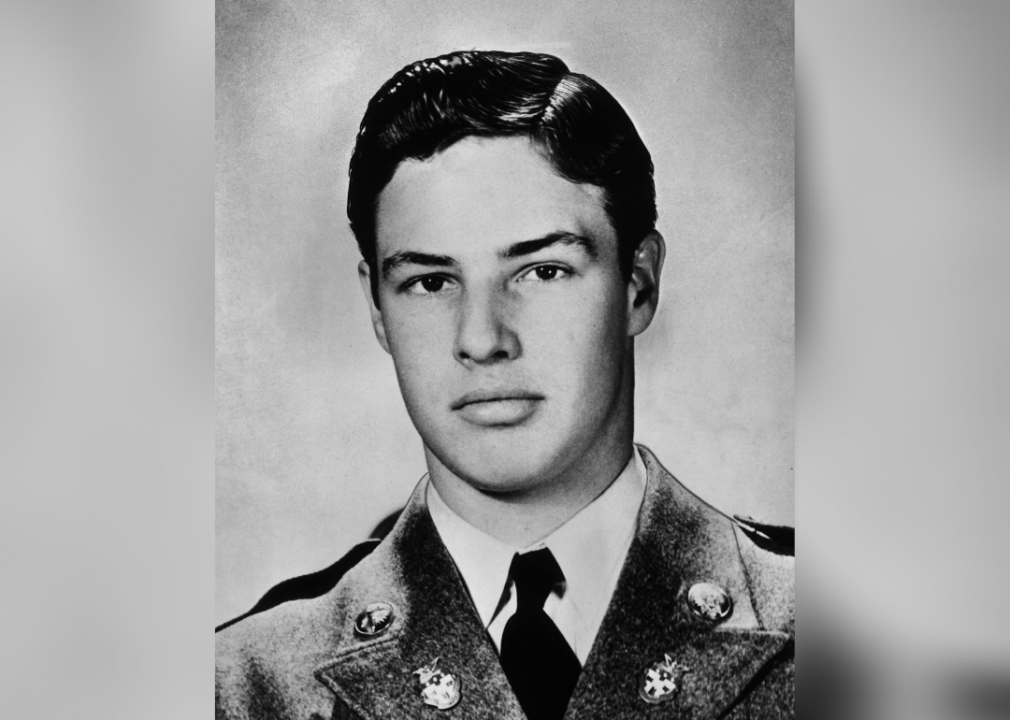
Hulton Archive // Getty Images
1940s: Brando’s troubled teenage years
Kicked out of high school for misbehaving, Brando at 16 was sent to Shattuck Military Academy in Minnesota, which his father attended. Brando was kicked out of Shattuck as well and headed to New York City, where his sisters were studying theater and art.
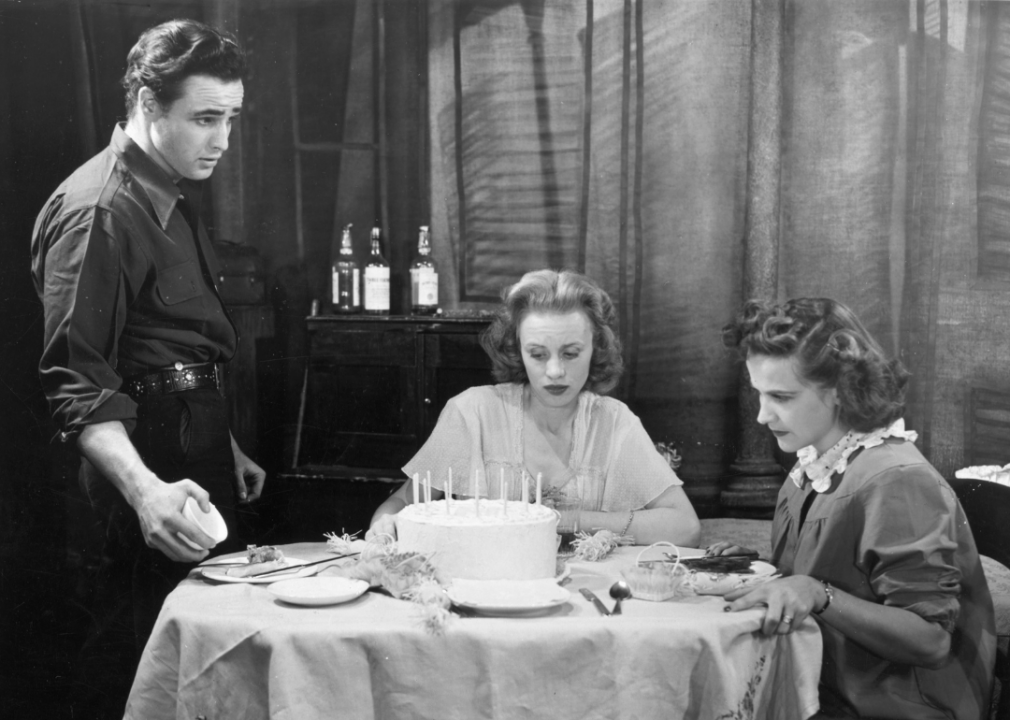
Bettman // Getty Images
1943: Brando studies acting in New York
In New York, Brando enrolled in the Lee Strasberg Actors Studio, where he studied under the famed teacher Stella Adler, who taught acting techniques that drew on emotional memory. She took him under her wing and became his mentor.
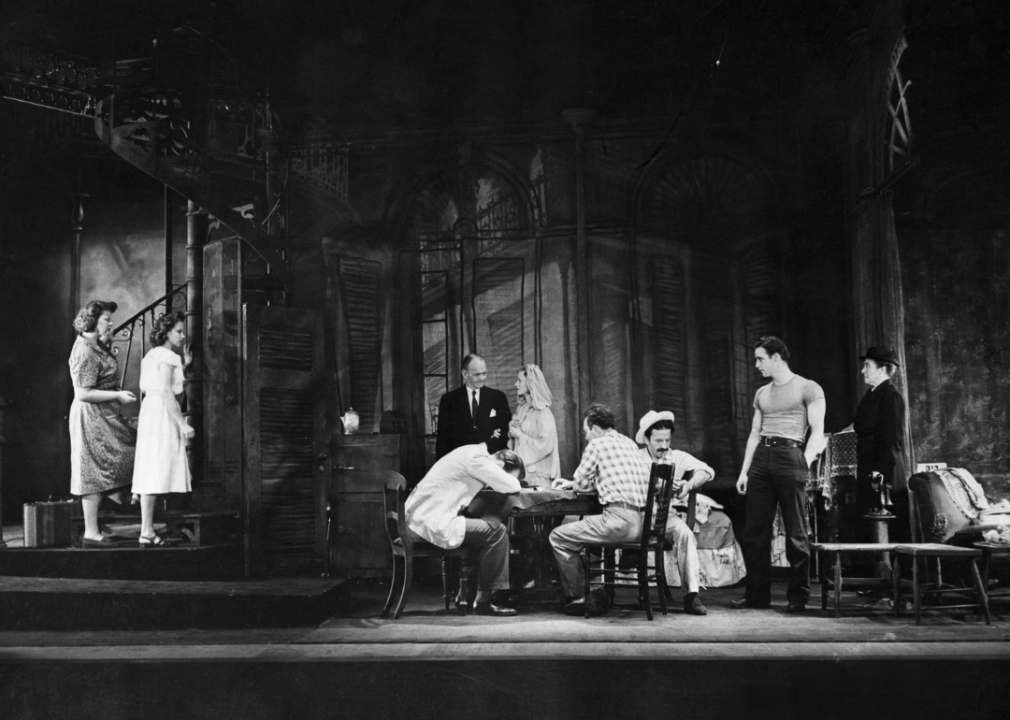
Bettman // Getty Images
1940s: Star performances on Broadway
On Broadway, Brando’s first major role was in the 1944 play “I Remember Mama.” His breakout role came three years later as Stanley Kowalski in Tennessee Williams’ play “A Streetcar Named Desire.” Brando turned down Hollywood screen tests because he did not want to get stuck in a long-term film contract.
You may also like: 30 secret celebrity weddings
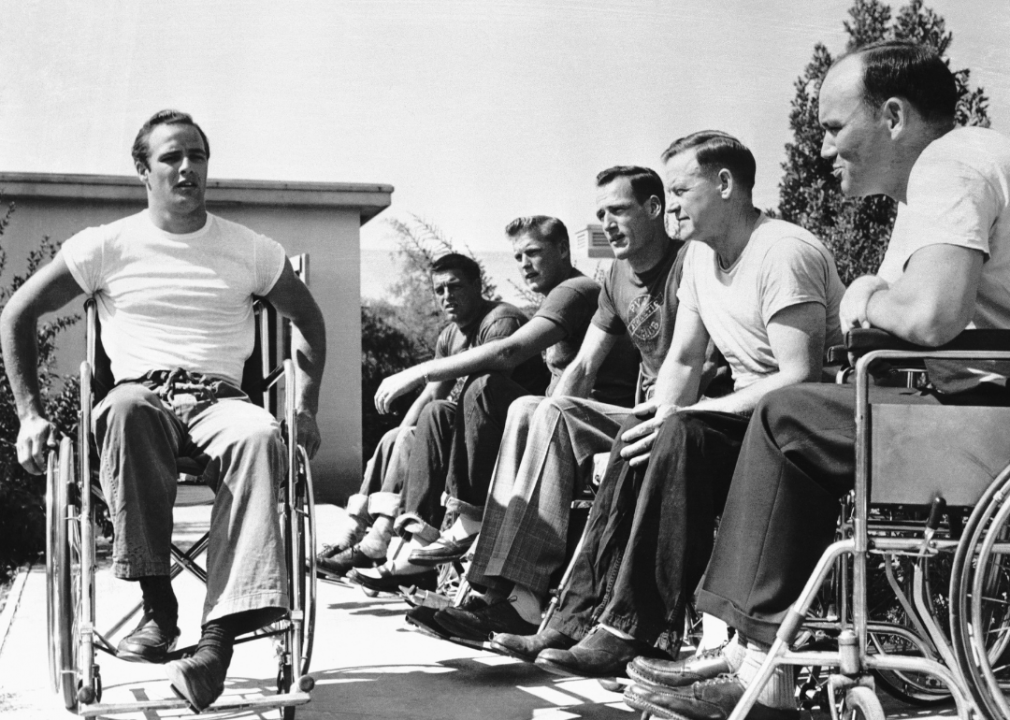
Bettman // Getty Images
1950: Learning the role of a paralyzed veteran
For his first film role in 1950, “The Men,” Brando played a paraplegic war veteran. To learn his part, he used a wheelchair and spent a month at a hospital for disabled patients.
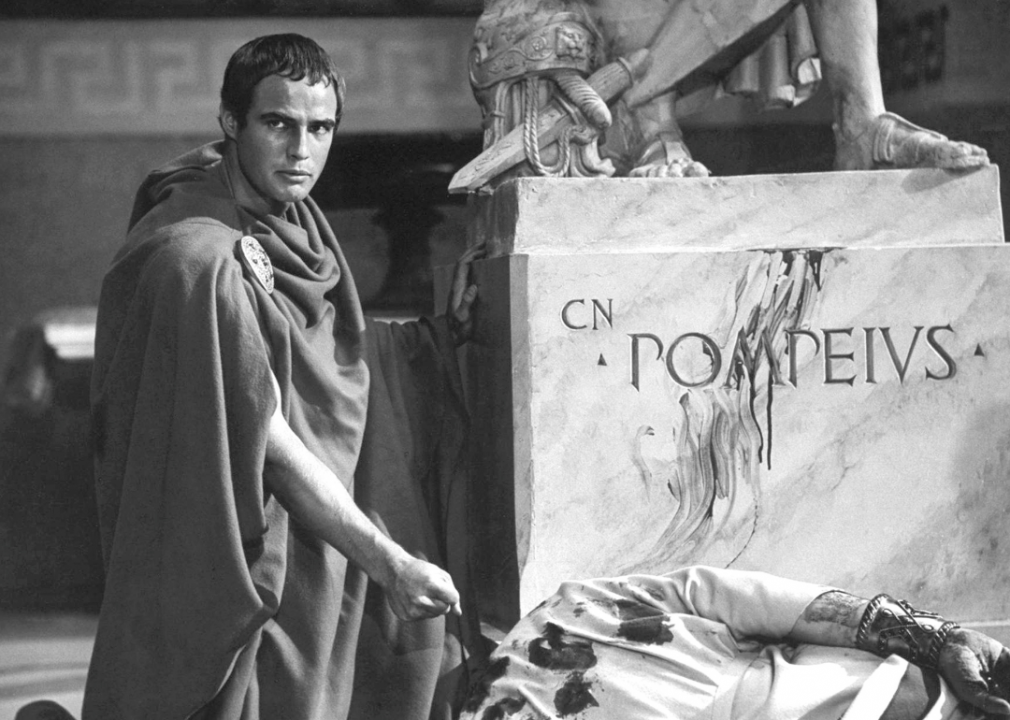
Metro-Goldwyn-Mayer Pictures/Sunset Boulevard/Corbis via Getty Images
1950s: Three Oscar nods in a row
In 1951, Brando reprised his role of Stanley Kowalski for the movie version of “A Streetcar Named Desire” with director Elia Kazan. It earned him his first Academy Award nomination. He went on to star in “Viva Zapata!” in 1952, earning a second Academy Award nomination, then played Marc Antony in “Julius Caesar” in 1953, earning his third straight Academy Award nomination.
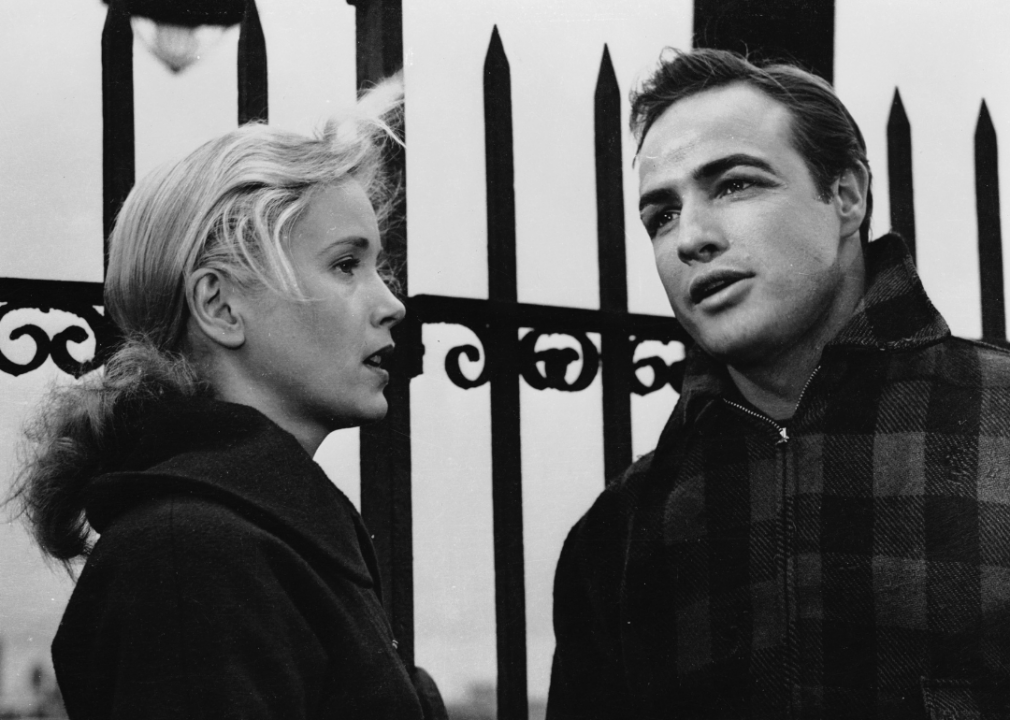
John Kobal Foundation // Getty Images
1955: Creating “On the Waterfront”
One of Brando’s most iconic roles came in 1955 in “On the Waterfront,” playing former fighter Terry Malloy. A famous scene in which Brando picks up a glove dropped by co-star Eva Marie Saint and puts it on his own hand was improvised in rehearsal, and director Elia Kazan kept it for the filming. The role won Brando his first Academy Award.
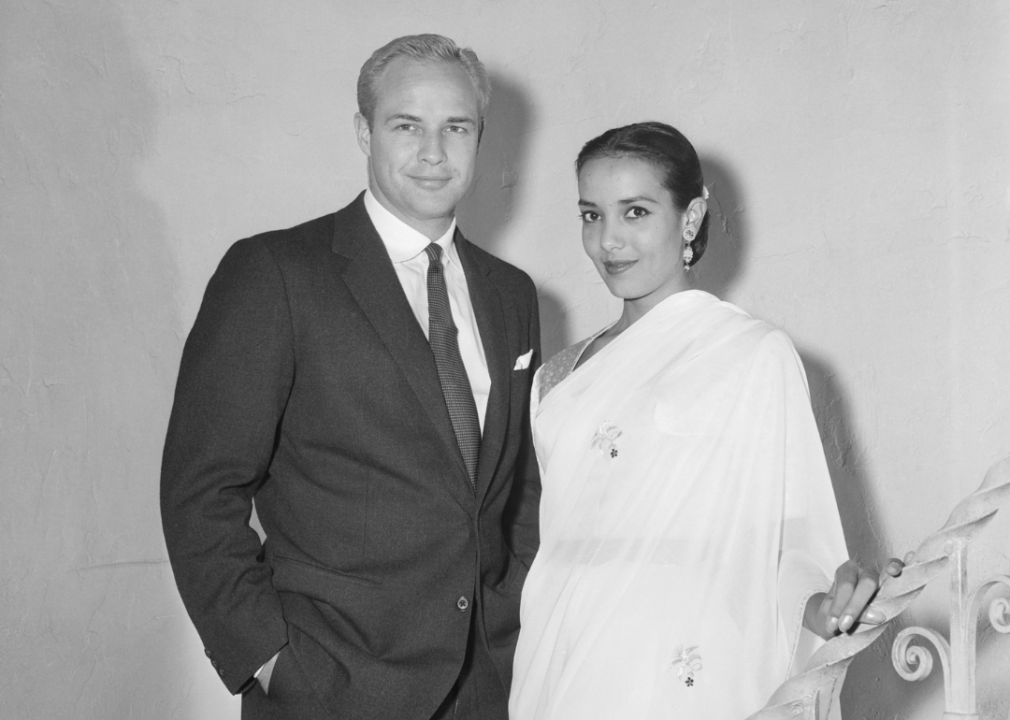
Bettman // Getty Images
1957: Brando marries Indian actress Anna Kashfi
Brando’s first wife was Indian actress Anna Kashfi, whom he married in 1957. They divorced after two years. In a long custody battle, Kashfi paid $10,000 in a scheme to have their son, Christian, kidnapped while Brando was filming “Last Tango In Paris” in France in 1972.
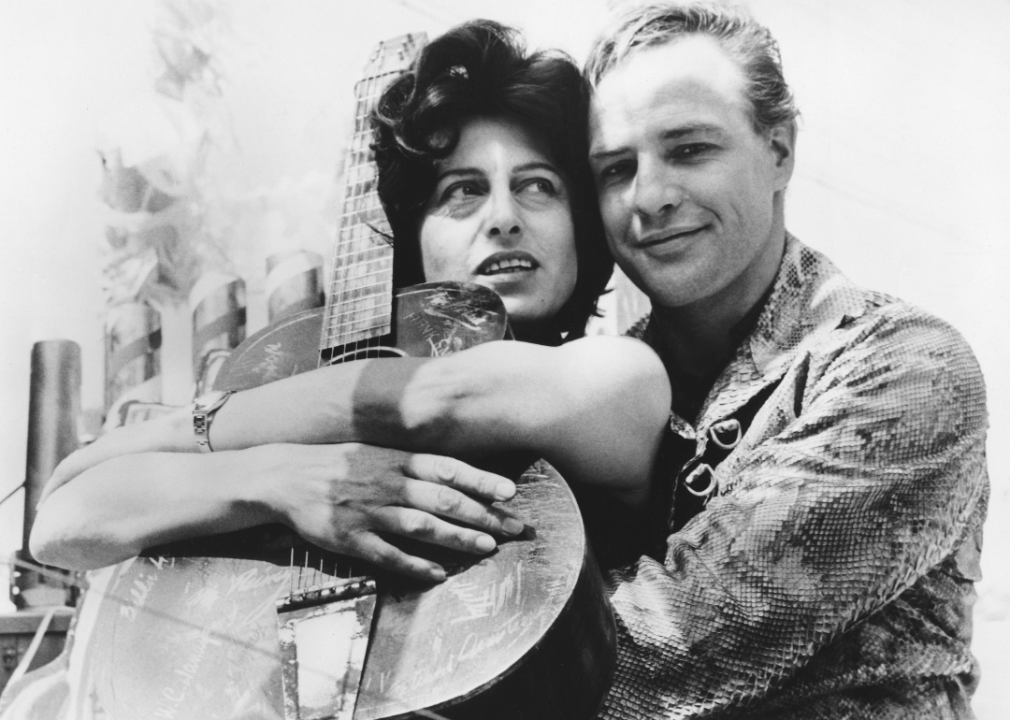
United Artists/Sunset Boulevard/Corbis via Getty Images
1960: Salary for Brando movie role hits $1 million
The actor appeared in the 1960 film “The Fugitive Kind,” based on the Tennessee Williams’ play “Orpheus Descending.” With this part, he became the second actor, after Elizabeth Taylor, to be paid $1 million for a movie role.
[Pictured: Anna Magnani and Marlon Brando on the set of “The Fugitive Kind” in 1959.]
You may also like: 40 surprising celebrity “where are they nows”
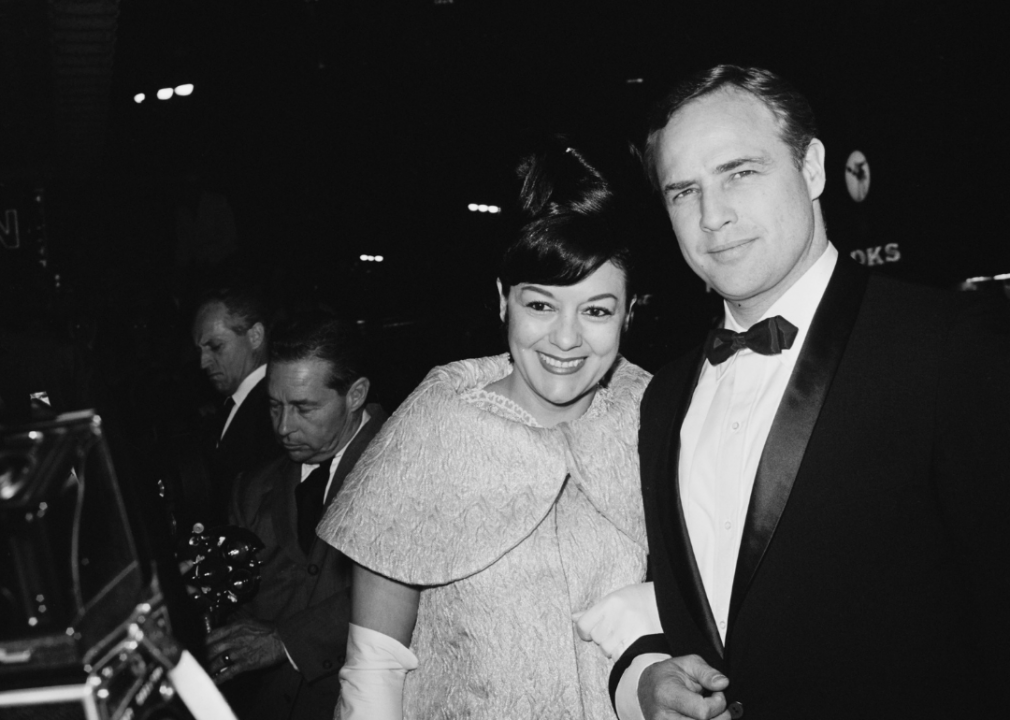
Archive Photos // Getty Images
1960: Star marries American actress Movita Castaneda
Brando married his second wife, American actress Movita Castaneda, in 1960. They had two children—Miko and Rebecca.
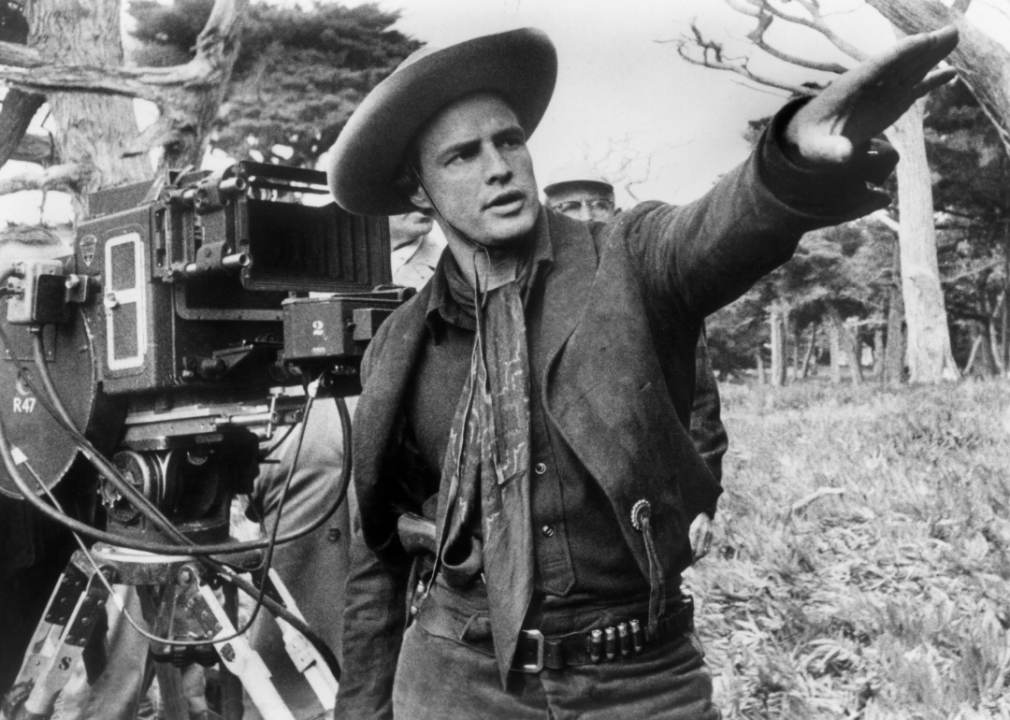
FilmPublicityArchive/United Archives via Getty Images
1961: One and only turn as director
Moving to the other side of the camera, Brando directed one movie—”One-Eyed Jacks” in 1961—with himself and Karl Malden in major roles. It was a financial failure, costing $6 million to make.
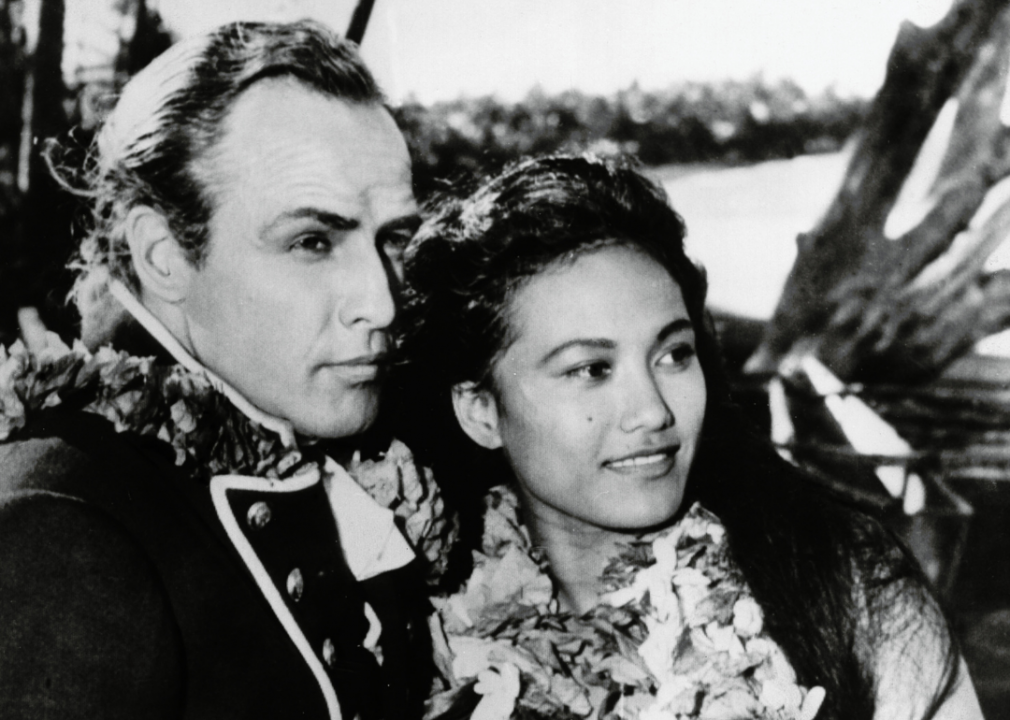
ullstein bild via Getty Images
1962: Brando marries Tahitian actress Tarita Teriipaia
Brando met his third wife, 20-year-old Tahitian actress and dancer Tarita Teriipaia, while he was filming “Mutiny On The Bounty” in 1962. They were married for 10 years and had two children—Simon and Cheyenne.
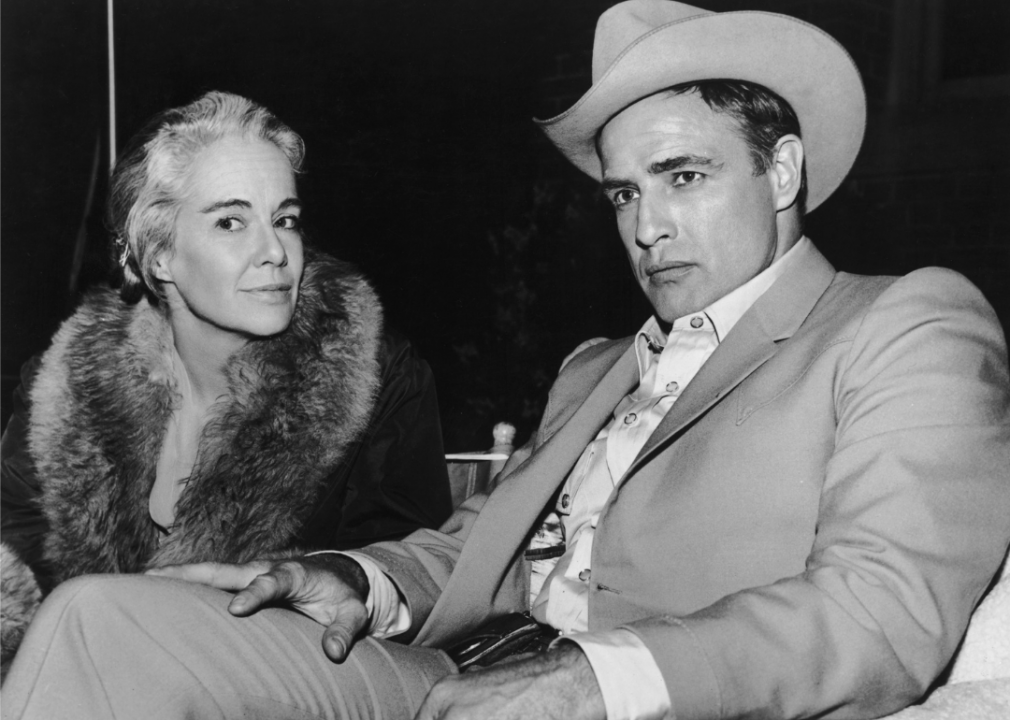
Hulton Archive // Getty Images
1960s: A string of movie flops
In the 1960s, Brando made a series of failed movies, including “The Ugly American” in 1963, “Bedtime Story” in 1964, and “The Chase” in 1966, also starring Jane Fonda and Robert Redford and directed by Arthur Penn. “The Chase” was panned by critics, but others have said since that Brando’s performance was underrated.
[Pictured: Marlon Brando and Jocelyn Brando on the set of director Arthur Penn’s film, “The Chase,” in which both appeared.]
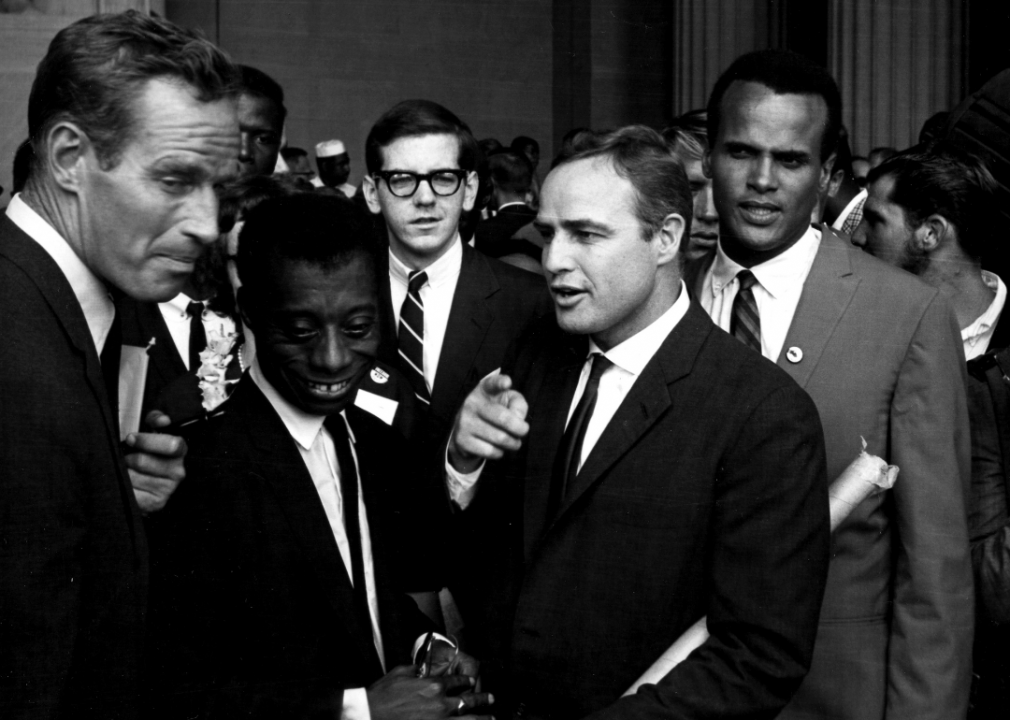
PhotoQuest // Getty Images
1963: Supporting the cause of civil rights
A supporter of civil rights, Brando joined the March on Washington for Jobs and Freedom in 1963, where Dr. Martin Luther King Jr. delivered his “I Have A Dream” speech at the Lincoln Memorial.
[Pictured: Charleton Heston (left), Harry Belafonte (right), and writer James Baldwin (center left) talk with actor Marlon Brando in the Lincoln Memorial during the March on Washington for Jobs and Freedom in Washington D.C., August 28, 1963.]
You may also like: 100 best movies of all time
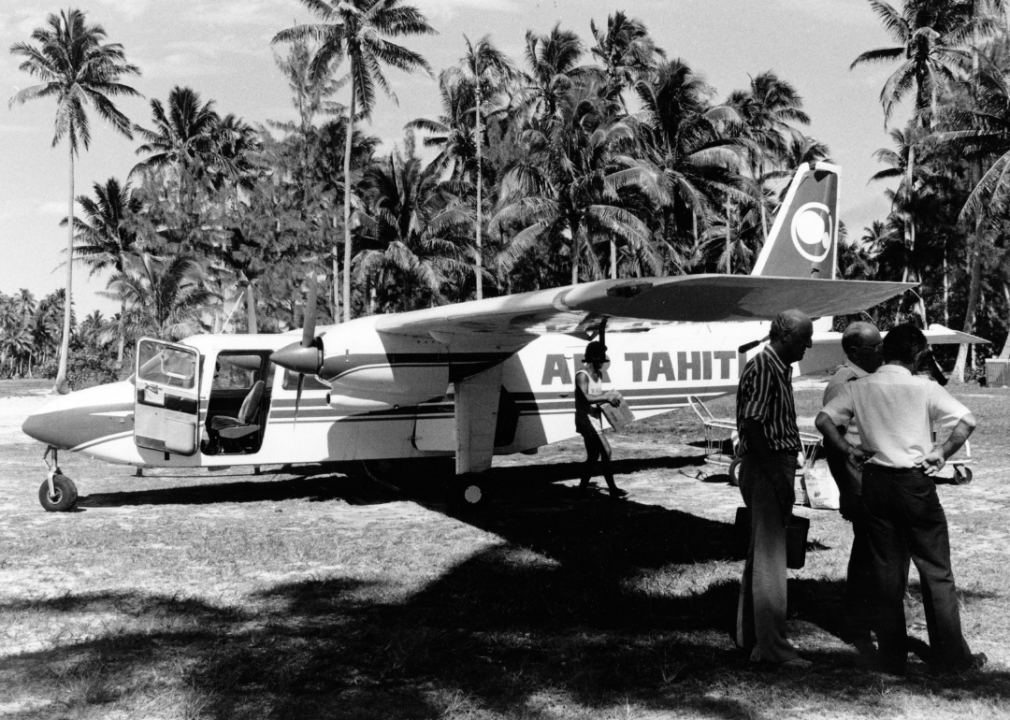
PL Gould/Images // Getty Images
1966: Buying a Tahitian paradise
Falling in love with the South Pacific, Brando bought Tetiaroa, a 27-square-mile island in 1966 and owned it for the rest of his life. He dreamed of forward-thinking plans for his property like installing solar power, building habitats for wildlife, making algae into a food supplement, and creating a getaway for artists and thinkers. Tetiaroa was badly damaged by a hurricane in 1983. Today, the island is the site of a high-end ecologically minded resort.
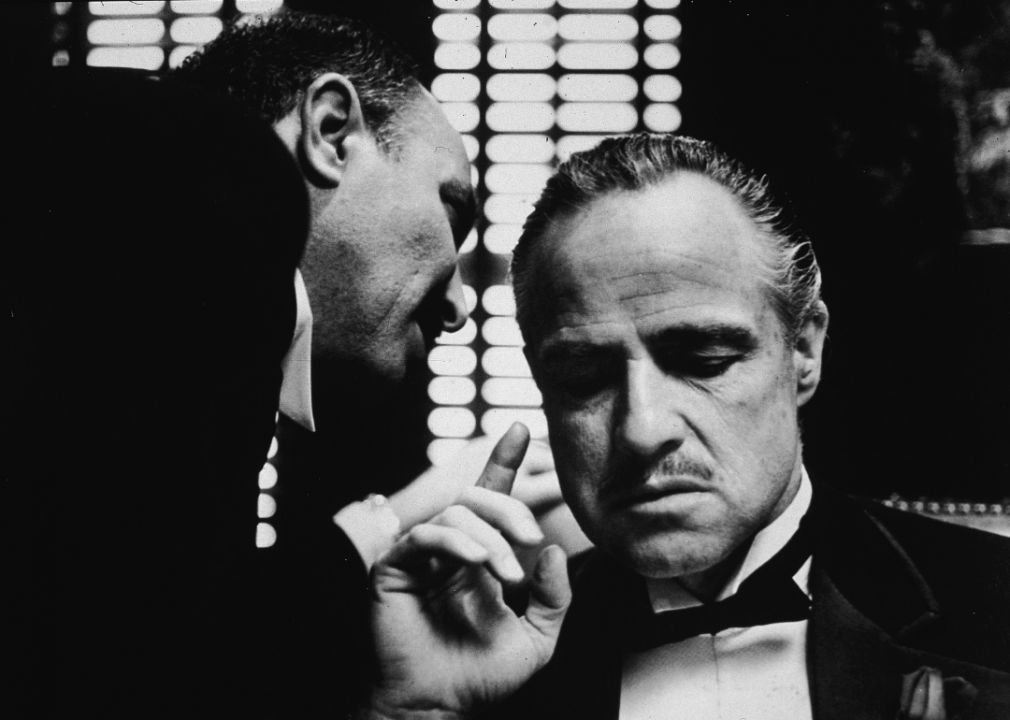
Paramount Pictures/Courtesy of Getty Images
1972: A comeback in “The Godfather”
After a string of failed movies, Brando made a career comeback playing Don Vito Corleone in “The Godfather” in 1972. Hollywood studio executives were not thrilled at hiring the difficult actor, but director Francis Ford Coppola had Brando take a screen test that so impressed them that they changed their thinking.
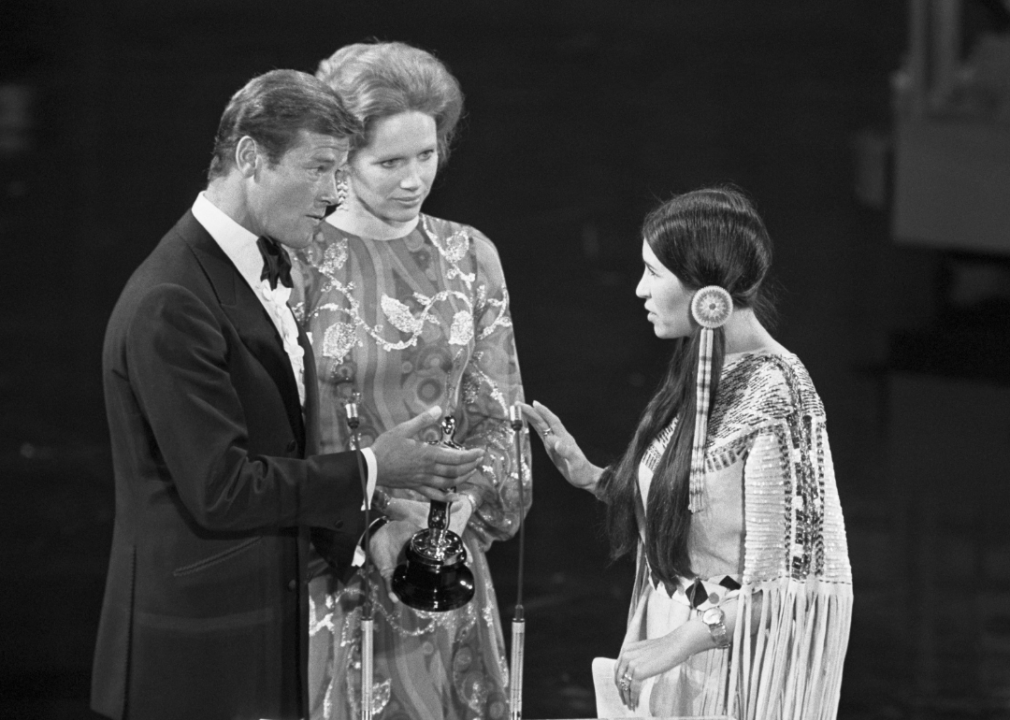
Bettman // Getty Images
1973: Turning down an Oscar
Winning the Academy Award in 1973 for “The Godfather,” Brando sent a woman clad in Apache dress named Sacheen Littlefeather to turn down the award on his behalf. “He very regretfully cannot accept this very generous award,” she said, citing “the treatment of American Indians today” by the film and television industry.
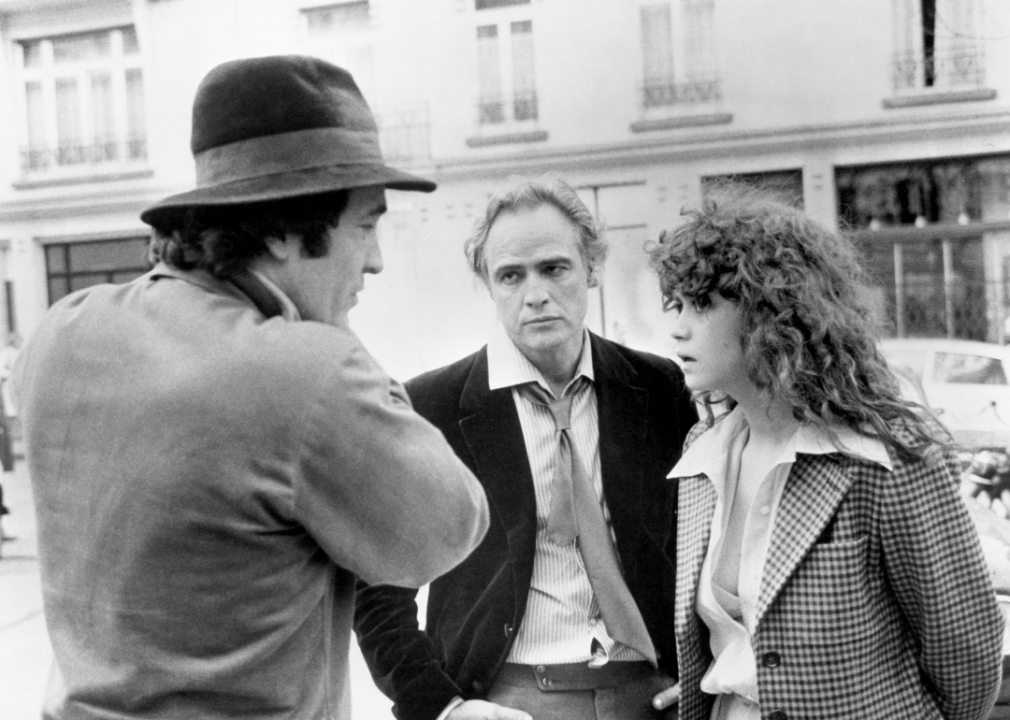
George Rinhart/Corbis via Getty Images
1972: Making the X-rated “Last Tango in Paris”
In 1972, Brando appeared in the X-rated “Last Tango in Paris.” Following its release, Brando, co-star Maria Schneider, director Bernardo Bertolucci, and producer Alberto Grimaldi were charged in Italy with making pornography but were cleared.
[Pictured: Marlon Brando, Bernardo Bertolucci and Maria Schneider during filming of “The Last Tango in Paris” in 1973.]
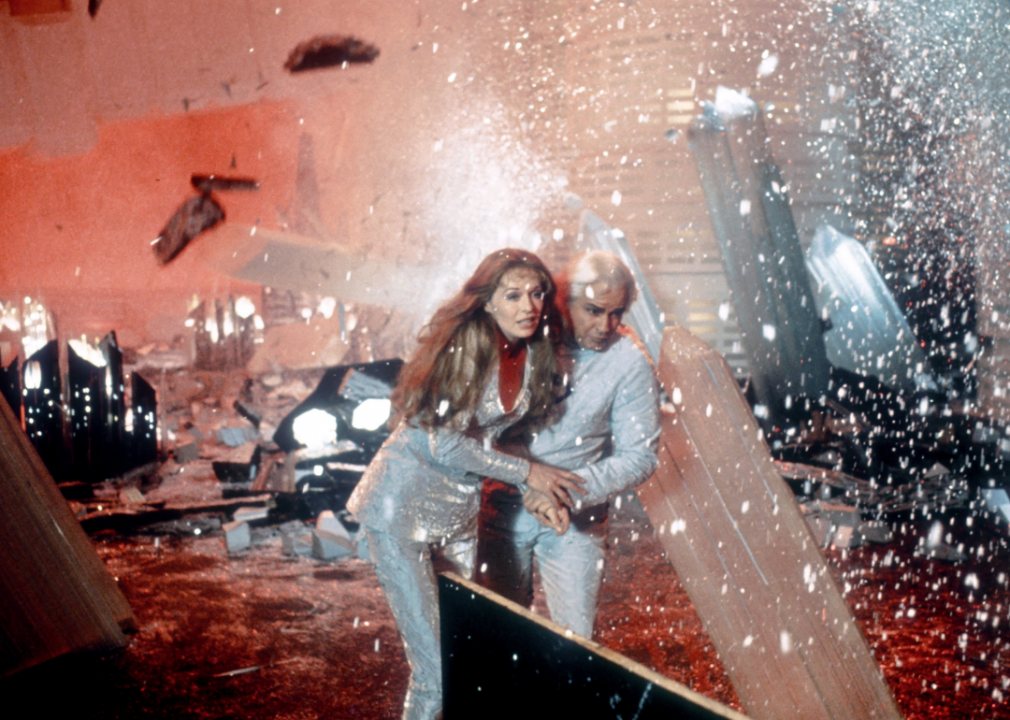
Michael Ochs Archives // Getty Images
1978: Cashing in as Superman’s father
In 1978, Brando was reportedly paid $15 million for his role as the superhero’s father Jor-El in the movie “Superman.” He was only on screen for 15 minutes.
You may also like: 111 monumental movies from film history and why you need to see them
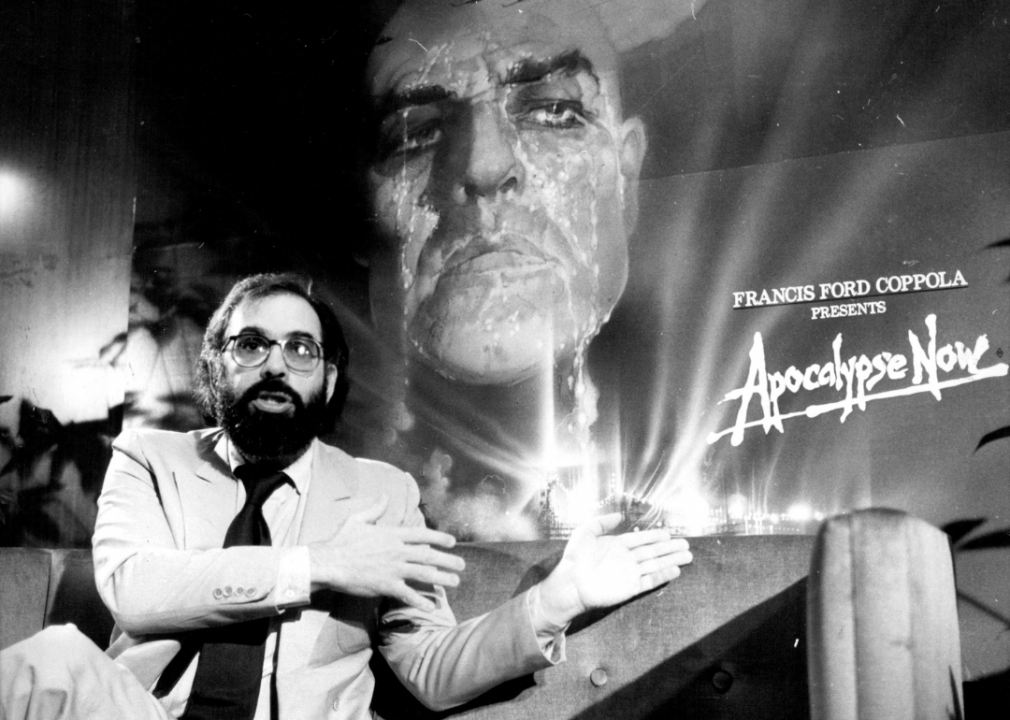
Antonin Cermak/Fairfax Media via Getty Images
1979: Clashing over appearance in “Apocalypse Now”
Director Francis Ford Coppola and Brando did not get along when they made “Apocalypse Now” in 1979. The two clashed over how the very overweight actor would appear on screen, and Brando succeeded in appearing in dark scenes that did not reveal the extent of his weight gain.
[Pictured: Director Francis Ford Coppola at a press conference for “Apocalypse Now” in Sydney, Australia in 1979.]
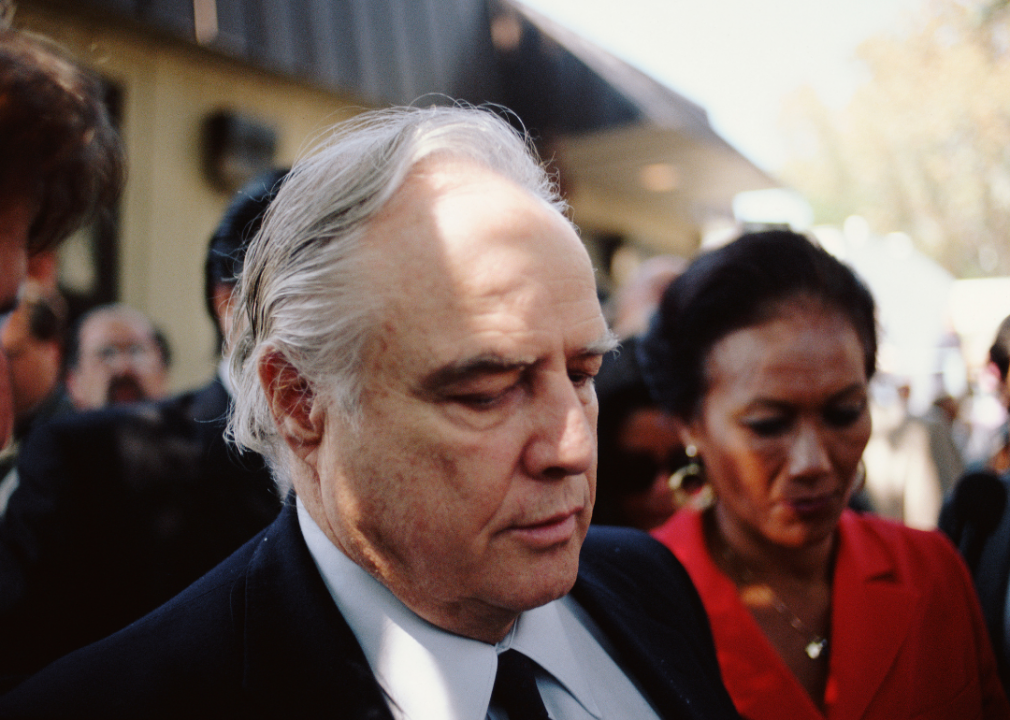
Bill Nation/Sygma via Getty Images
1990: Family tragedy strikes
In May 1990, Brando’s 32-year-old son Christian shot and killed Dag Drollet, who was the 26-year-old boyfriend of the star’s daughter Cheyenne Brando. Cheyenne was eight months pregnant and had claimed—falsely—that Drollet was physically abusing her. She took her own life five years later at age 25. Christian served five years in prison for manslaughter, and he died of pneumonia at age 49 in 2008.
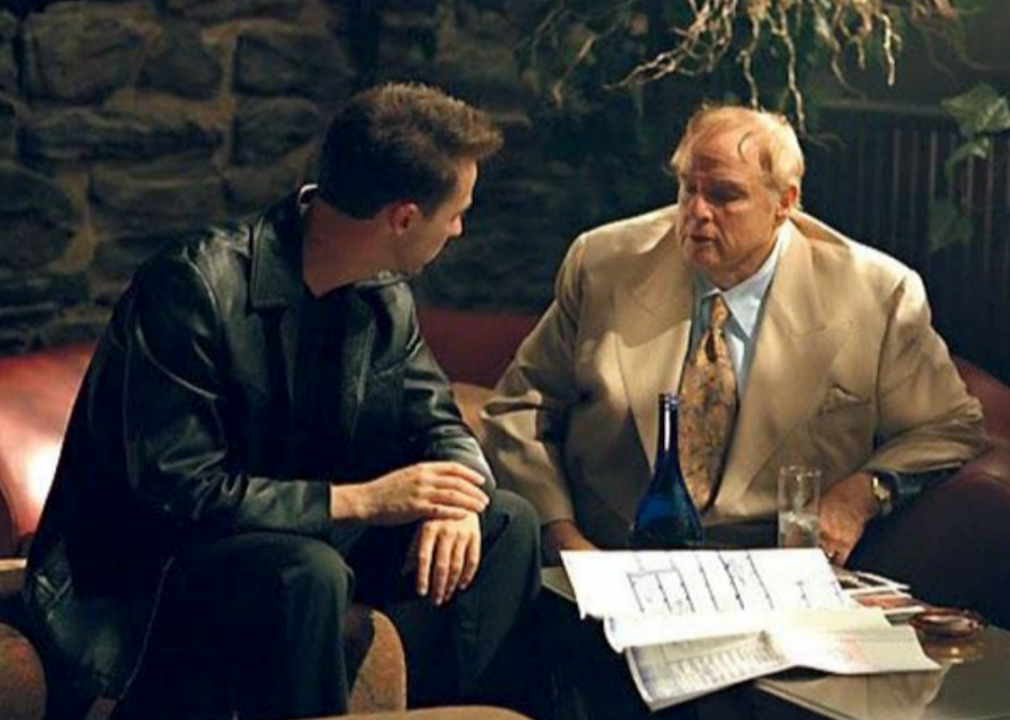
Paramount Pictures
2001: Making of “The Score”
Brando in 1990 made a comedy, “The Freshman,” in which he made fun of his “Godfather” character, and his last completed movie was “The Score” in 2001 with Robert De Niro and Edward Norton. According to film lore, Brando often refused to wear pants on the set of “The Score,” thus forcing him to be shot only close up and above the waist.
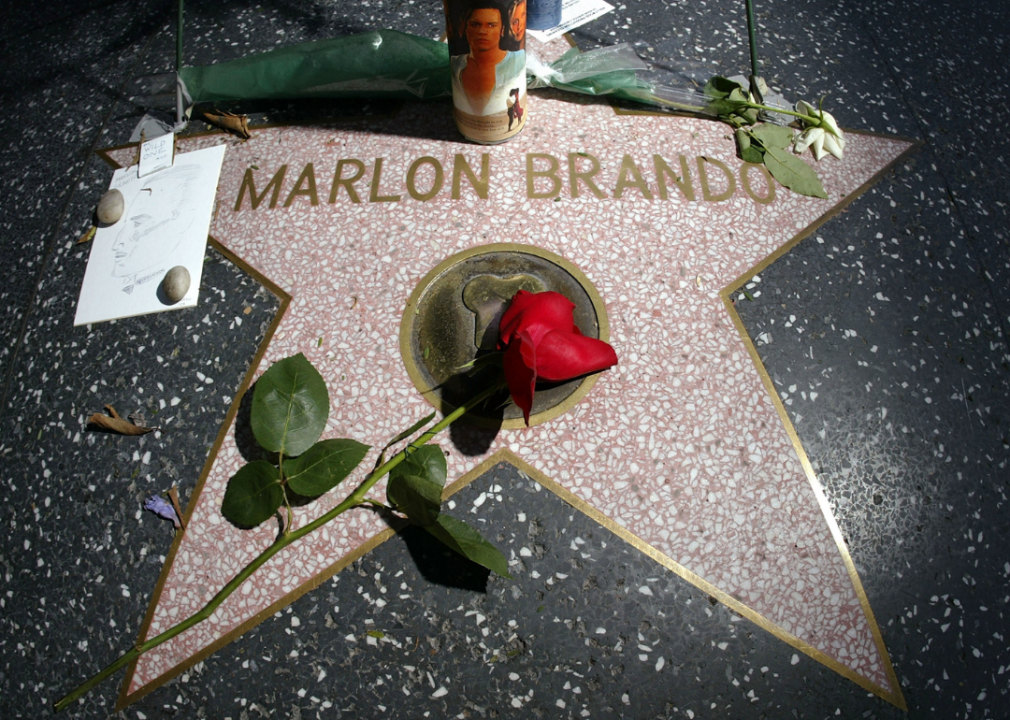
Mark Mainz // Getty Images
2004: Dead at age 80
In old age, Brando suffered from diabetes, which caused his eyesight to fail, and from liver cancer. He died on July 1, 2004, of respiratory and heart ailments.

Douglas Peebles/Corbis via Getty Images
2004: Brando’s ashes spread in Tahiti, Death Valley
Brando was cremated, and he has two final resting places. His family members scattered his ashes in Tahiti and in Death Valley, California.
[Pictured: Seabirds fly over the clear water of the South Pacific, the island of Tetiaroa is visible in the distance.]
You may also like: Can you answer these real ‘Jeopardy!’ clues about celebrities?


